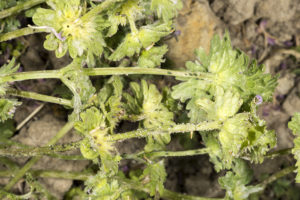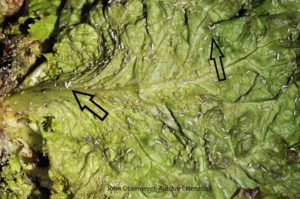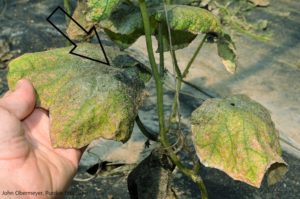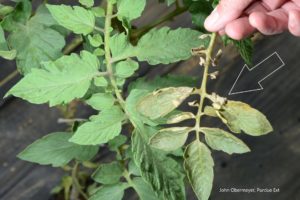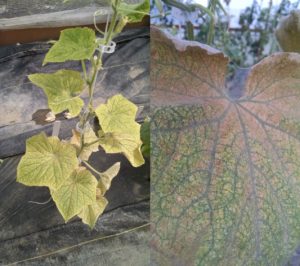As we wait patiently for the ground to dry and our seedlings to grow, take a moment to consider your strategy for maintaining plant health. If you haven’t started already, it is time to make sure that your pest monitoring programs are in place for the season. For those of you growing in high tunnels, you may already be encountering some of the troublesome insects that can keep us up at night, such as aphids and spider mites. Here, I want to review some basic considerations for monitoring and detecting insect pests.
First, it is important to recognize that the best way to avoid insect damage is prevention. This includes sanitation practices and monitoring of transplants. Regardless of your production method (greenhouse, high tunnel, field) you want to be sure that any plants that have overwintered in the area free from overwintering pests. This can include disease residue on plant debris that may not have been cleaned up from last year or aphids lingering on some of the annual weeds that creep in. In Figure 1 you can see an early infestation of aphids on the annual weed henbit. If these are not removed prior to transplanting, they can move into the crop quickly. Be sure to carefully inspect your transplants prior to putting them in the field. It is much easier to remove a pest in the flats before they are spread throughout the field.
Second, familiarize yourself with the common pests that you tend to encounter in your crop and learn to recognize the early symptoms of infestations. For aphids, this can be the exuvia (skin) they shed which remains on the leaves after they molt (Figure 2) or the honeydew they produce that drips down onto the leaf surface below their feeding site where sooty mold then grows (Figure 3). Mites are difficult to see but can cause different symptoms such as bronzing (tomato russet mite, Figure 4) or yellowing and webbing on the underside (two-spotted spider mites, Figure 5). Larger pests can cause more apparent damage such as holes in the leaves but may not necessarily be easier to detect.
My advice is to be monitoring your crop on a weekly basis. The frequency of scouting events, locations to scout and number of plants to observe will vary depending on the crop and anticipated pest. In general, it is best practice to start at the edge of the crop and walk inward, perpendicular to the edge. Some insects colonize edges of fields preferentially (aphids, spider mites) and other are randomly distributed or can occur in aggregations (cucumber beetles, caterpillars). Therefore, walking from the edge in, along a few different entry points, will give you better coverage of the field. Be sure to examine the growing point and the underside of leaves. For those that are difficult to see (thrips, mites) use a white piece of paper and shake the plant vigorously to dislodge the pest. You will see them crawling on the paper.
If you rely on natural enemies to control the pest, scout for those as well when walking through the crop. If you are going to supplement the naturally-occurring beneficial insects with commercially-available natural enemies, purchase at the first sign of the pest. Many times it will take at least one week for the organisms to arrive so you need to be prepared because the pests can grow quickly. For information on biological control suppliers see https://vegcropshotline.org/article/considerations-and-suppliers-for-biological-control/.
If you use conventional insecticides, see the latest Midwest Vegetable Production Guide ID-56 for up-to-date recommendations. https://ag.purdue.edu/btny/midwest-vegetable-guide/Pages/default.aspx
Happy Growing!
